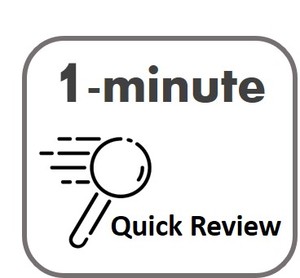Quick Reviews in 1 minute

Easy and fun way to review content or atmosphere at the end of a group activity (or in between) in 1 minute.
Goal
Materials
Instructions
Before
Ideal conditions: There are no special conditions needed.
During
Following are five different activities for a quick review in just one minute.
1. Mood states (ups & downs)
In order to find out how people are feeling at this point, or after the workshop, the facilitator can ask the participants to simultaneously indicate their mood by using simple signals such as thumps up, down, or in between. If the facilitator wants everybody to see one another's mood the group can gather around in a circle. Of course two or three words about a mood are possible, if there are any surprises (e.g. all thumbs up except one).
Tips for online facilitation: Get participants to use virtual emojis or type in chat or other online feedback tools.
2. Energy levels (fuel gauge)
In order to find out how tired or attentive the participants are, the facilitator can ask the participants how energetic they feel. The easy signals are shown simultaneously (and if wanted in a circle) again. The participants can use their body as a fuel gauge, for example with the hands on their head, meaning full of energy, their hands on the hips as being half full, and on their feet implying that there is no energy left.
Tips for online facilitation: Participants with videos turn on and all in gallery view.
3. Three words
Ask the participants, after some thinking time to state three separate words that are not a phrase, that would describe what they have experienced during the activity, or so far. This is an example of less is more, as a lot can be communicated with just three words, instead of the time consuming attempt to state one sentence, mostly evolving in more than just one. Again this can be done in a circle, with bigger groups also in subgroups.
Tips for online facilitation: Get participants to type in chat or other online feedback tools.
4. Positive feedback (about the group)
The participants, as well as the facilitator should try to find "10 good things about the group during a certain activity". Of course it can be more than ten statements, considering that the first ones are most likely to be very vague. Here quantity brings out quality as the comments tend to get more specific.
The facilitator can end this exercise by asking what the participants want to (or will) carry forward to the next activities.
Tips for online facilitation: Get participants to type in chat or other online feedback tools.
5. Time out (mid-activity reviewing)
By using one of the above mentioned exercises during an activity, the facilitator gives participants the opportunity to rest their mind for a moment. These exercises can be done during snack time, while sheltering from the weather (outdoor activities), or while waiting for a technical device to work.
After
Follow-Up Required: There is no follow-up required.
Usual or Expected Outcomes: The outcome is an overview of people's mood, energy level, experiences, wishes etc..
Potential pitfalls: A problem could occur when the process takes longer than the concise estimated time. This could disturb the schedule.
How success is evaluated: the process is successful when the facilitator knows how the participants feel, and then uses it to plan the next steps, or workshops (e.g. an immediate break).
Attachments
- 1minQR.jpg
Background
Source: Roger Greenaway